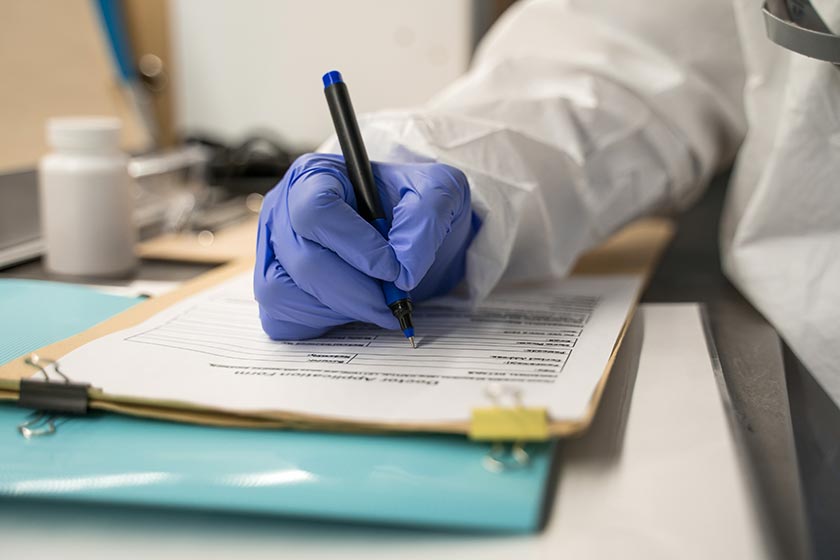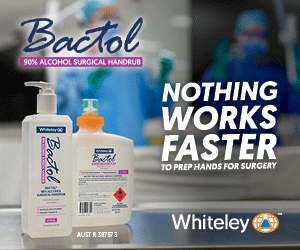This study provides insight into nurses’ recognition of and responses to unsafe practice by their nursing peers. It also identifies the early warning signs of practice creeping across the safety boundary in clinical settings.
Using a mixed methods approach, the study identified the behaviours and cues that nurses recognised as unsafe and what influenced such practice by their peers. In addition, this study sought to report the actions and responses by nurses when they encountered unsafe practice. Initially, a small number of participants were interviewed about their perceptions of working with colleagues they thought were practising unsafely. This data was combined with relevant literature to develop the survey used in the study.
The survey collected quantitative (measurable) data from 231 nurses in New Zealand about organisational practices and policies for the prevention of unsafe practice, identification of the potential for unsafe practice, identification of behaviours and factors associated with unsafe practice, and nurses’ responses to unsafe practice.
The prevalence of witnessing unsafe practice in the previous 12 months was similar for nurses and managers, and higher in this study (66 per cent) than reported in other studies.1, 2, 3 All the behaviours in this survey were found to be strongly associated with unsafe practice, with scores ranging from 68 to 97 per cent.
Unprofessional behaviour was identified as being related to unsafe practice by the majority of participants (90 per cent). The most frequently reported cues that alerted participants to the potential for unsafe practice by their colleagues were failing to document information accurately, not demonstrating expected knowledge and failing to collaborate effectively with colleagues.
Comparisons between nurses and managers showed that managers had a better understanding of organisational approaches to assessing practice and were more likely to formally report a colleague for unsafe practice. Issues such as poor organisational culture and leadership, inadequate training, workload, staffing and skill mix were identified by both groups as factors that influenced the occurrence of unsafe practice.
The most frequently perceived contributing factors were high workloads, taking shortcuts, poor teamwork and being in an unfamiliar situation.
The most frequently perceived contributing factors were high workloads, taking shortcuts, poor teamwork and being in an unfamiliar situation. Poor skill mix, organisational culture and leadership along with inadequate training prior to re-entry to practice were also identified as contributing to unsafe practice.
The rate of reporting was lower in this study (77 per cent) than in other studies1, 3 and the odds of reporting were significantly higher for managers.
Participants reported a variety of different responses to witnessing unsafe practice, with the most common action being speaking to the nurse involved.
Overconfidence
Interview data identified cues to unsafe practice including overconfidence, hiding practice, complacent attitude and approach, scope of practice transgressions, unprofessional behaviour, failure to follow accepted practice standards, poor interpersonal and communication skills, culturally unsafe behaviour and bullying as a precursor to unsafe practice.
The influence of collegial and organisational culture on the recognition of unsafe practice was also identified.
Nurses’ responses to witnessing unsafe practice included experiencing the challenge of taking action, watching and waiting (increased vigilance), and self-monitoring. They also felt influenced in their responses by a perceived lack of other responses, the collegial and organisational culture on response, and other conditions that influenced responses to unsafe practice.
Common cues
The most frequently reported cues that alerted participants to the potential for unsafe practice by their colleagues were:
- failing to document information accurately,
- not demonstrating expected knowledge, and
- failing to collaborate effectively with colleagues.
Level of proof needed
Themes of uncertainty, sensing unsafe practice and disrupted professionalism emerged from the data. Uncertainty permeated all aspects of nurses’ recognition of and response to unsafe practice. This included uncertainty about what behaviours constituted unsafe practice, how it was recognised, what level of proof was required and how to respond when it was witnessed. While some behaviours were obviously unsafe, the subtle nature of many cues led to some nurses describing a “sense” that something was wrong with a colleague’s practice.
Fear of possible consequences and the repercussions of reporting was also described, and this influenced participants’ responses. Organisational and collegial influences left participants in the difficult position of weighing up whether or not they should respond to/report unsafe practice and this caused disruption to expected professional responses. Keeping the patient safe was an important deciding factor in intervening when unsafe practice was witnessed; however, this did not necessarily mean that reporting also occurred.
Organisational and collegial culture played a pivotal role in the development of unsafe practice through tolerance of substandard practice and the development of customary practices. It is clear that to maintain safe practice, the work environment must support a high level of professionalism, open and honest communication and safe workloads, staffing levels and skill mix. Significant barriers to responding to unsafe practice for many nurses are identified in this study and these barriers need to be addressed by individuals, teams and organisations to improve safety.
When combined with uncertainty about what constitutes unsafe practice and how to respond, nurses can be left in a situation where they know what their professional obligations are and how they should respond, but feel unable to do so. When nurses sense issues with the practice of a colleague or the safety of a work environment, they need to be able to raise their concerns without fear of negative repercussions.

Fraught with uncertainty
To conclude, recognising and reporting unsafe practice in nursing peers is a process fraught with uncertainty. To meet expected practice standards, work environments need to support safe practice and nurses need to feel safe and confident about speaking out to protect patient safety. Expecting nurses to practice safely in an environment which does not support safe practice is unrealistic and has the potential to cause harm to both nurses and patients.
Work environments need to support safe practice and nurses need to feel safe and confident about speaking out to protect patient safety.
Study results provide comprehensive insight into the behaviours and cues that nurses recognised as indications of unsafe practice and how they responded to unsafe practice by their peers.
When unsafe practice is recognised, organisations should have a response which focuses on excellent clinical practice. Organisations require policy and guidelines which are non-punitive and support practice improvement.
References
- King, G. & Scudder, J. N. (2013). Reasons Registered Nurses Report Serious Wrongdoings in a Public Teaching Hospital. Psychological Reports, 112(2), 626-36. doi.org/10.2466/21.13.PR0.112.2.626-636
- Maurits, E. E. M., de Veer, A. J. E., Groenewegen, P. P., & Francke, A. L. (2016). Dealing with professional misconduct by colleagues in home care: a nationwide survey among nursing staff. BMC Nursing, 15(59), 1-11.
doi.org/10.1186/s12912-016-0182-2 - Weenink, J. W., Westert, G. P., Schoonhoven, L., Wollersheim, H. & Kool, R. B. (2015). Am I my brother’s keeper? A survey of 10 healthcare professions in the Netherlands about experiences with impaired and incompetent colleagues. BMJ Quality & Safety, 24, 56–64. doi.org/10.1136/bmjqs-2014-003068
- Blair, W., Kable, A., Palazzi, K., Courtney-Pratt, H., Doran, E. & Oldmeadow, C. (2021). Nurses’ perspectives of recognising and responding to unsafe practice by their peers: A national cross-sectional survey. Journal of Clinical Nursing, 30(7-8), 1168-1183. doi.org/10.1111/jocn.15670
- University of Newcastle, NOVA open access repository.
Wendy Blair’s research can be found in the Journal of Clinical Nursing,4 or in full via the University of Newcastle, NOVA open access repository.5





